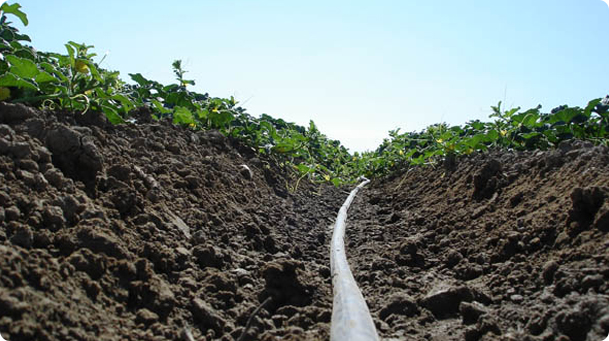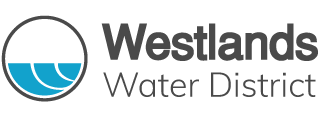The Irrigation Guide provides weekly real-time crop ET information to all growers using the Bureau of Reclamation Irrigation Management Service computer program. This Crop ET information has been provided since the Water Conservation Program began in 1978, and is necessary to develop efficient crop irrigation schedules, both real-time and average yearly values.

This information was originally based on a manually operated weather station located at the Westlands Tranquillity Field Office. Three automated weather stations are now used to provide real-time ET information; one operated by Westlands and two that are part of the CIMIS network. Westlands Water District, Tranquillity Irrigation District, Broadview Water District and CIMIS cooperatively operate the northern weather station site.
Climatic measurements are now obtained from the automated weather stations and are used to develop specific water use values to help growers estimate crop water use and schedule irrigation timing and amounts. Daily water use for various crops is presented in the Guide. This includes actual daily water use for the past 28 days and a 10-day forecast of crop water use based on National Weather Service forecasts and average historical weather conditions. The Guide also includes information on precipitation at the three weather stations in the District and at Shasta Dam, and on water storage quantities at San Luis Reservoir and Lake Shasta. On the reverse side of the Guide, water conservation information is printed, including upcoming events and deadlines, available assistance, and management tips. Project water quality is also now available in the Guide.
Clicking on the crop name for any crop in the Guide will link to a Fieldman Scheduling Sheet (FSS) for that crop. The FSS presents information, calculated from the Guide data, in a grid that can be used to minimize the calculations necessary to calculate the current depletion based on the date of the last refilling irrigation and the desired date. This page can be printed out to be taken into the field.
The data shown in the Guide is the result of extensive monitoring, between 1982 and 1995, of the various crops grown in Westlands to verify and calibrate the computer model used to calculate the crop water use values. While the Guide information has proved very accurate, each water user is encouraged to conduct regular soil moisture monitoring with the “feel” method or other means to verify the soil moisture status of each field. Growers also are encouraged to apply only the amount of water necessary to refill the crop root zone and satisfy salinity control and other cultural water needs.
Growers know their soil, climate, and crops. But for some, determining precise crop water needs, maintaining water use records, and calculating irrigation efficiency is a matter of tradition and practical experience. Armed with reliable information in a practical format, these growers are better equipped to schedule irrigations and apply the correct quantity of water for their specific field conditions. Comments from growers during routine contacts and Westlands-facilitated focus groups indicate a high level of utilization of the Guide. Some growers use the Guide’s crop water use information to confirm other methods, while many use it directly to schedule irrigations.
Daily Irrigation Guide
North of Kamm Ave.
Northern Zone Irrigation Guide
